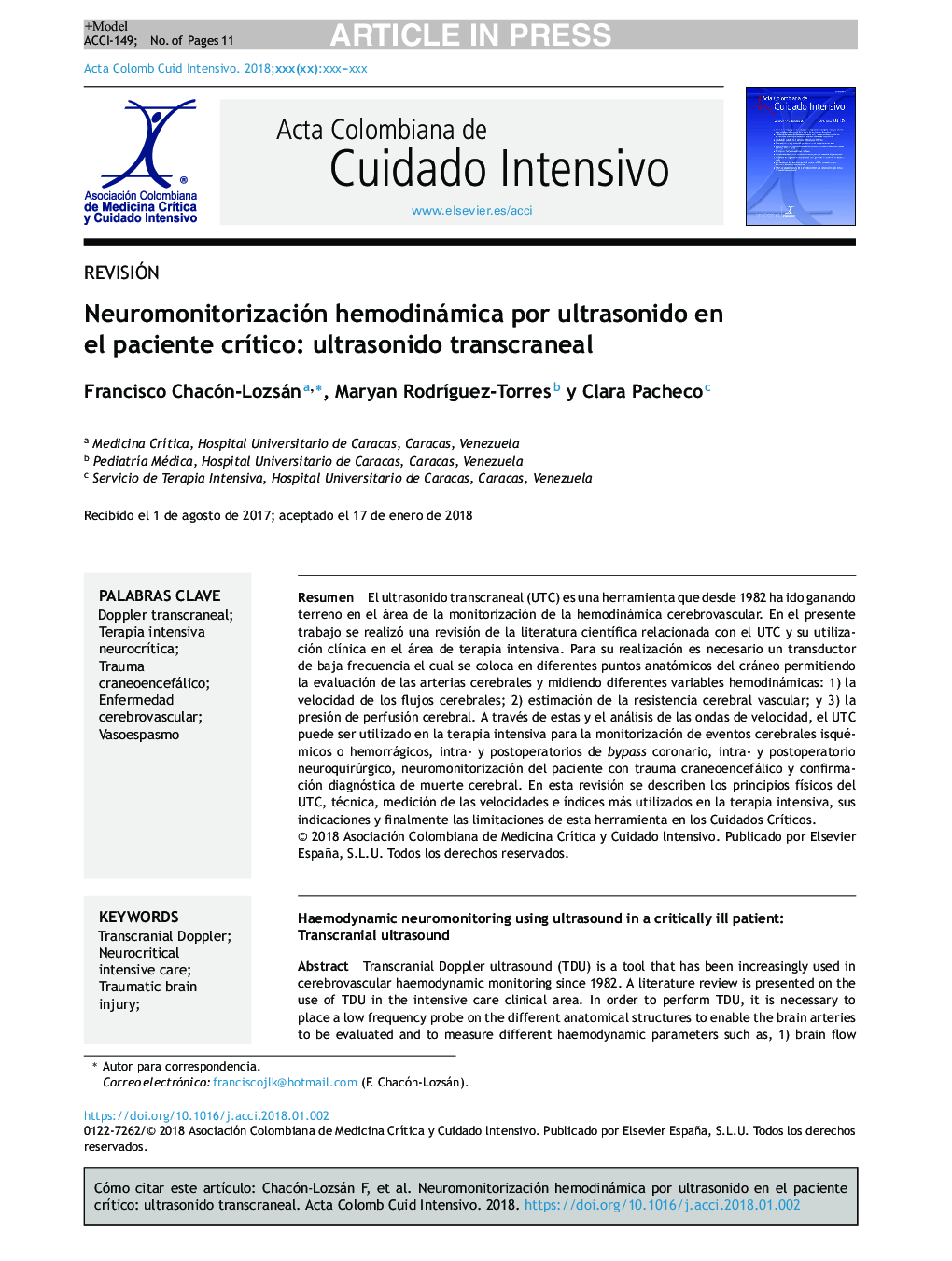| Article ID | Journal | Published Year | Pages | File Type |
|---|---|---|---|---|
| 8694476 | Acta Colombiana de Cuidado Intensivo | 2018 | 11 Pages |
Abstract
Transcranial Doppler ultrasound (TDU) is a tool that has been increasingly used in cerebrovascular haemodynamic monitoring since 1982. A literature review is presented on the use of TDU in the intensive care clinical area. In order to perform TDU, it is necessary to place a low frequency probe on the different anatomical structures to enable the brain arteries to be evaluated and to measure different haemodynamic parameters such as, 1) brain flow velocity, 2) estimation of vascular brain resistance, and 3) brain perfusion pressure. Using these parameters, and the analysis of the wave form, the TDU can be used in intensive care to monitor cerebrovascular ischaemic or haemorrhagic events, intra- and post-surgery coronary bypass, intra- and post-neurosurgery, as well as neuromonitoring of traumatic brain injury and the confirmation of brain death. The present review describes the physical principles of TDU, the technique, the measurement of velocities and indices most used in intensive care, their indications, and finally, the limitations of this tool in Critical Care.
Keywords
Related Topics
Health Sciences
Medicine and Dentistry
Critical Care and Intensive Care Medicine
Authors
Francisco Chacón-Lozsán, Maryan RodrÃguez-Torres, Clara Pacheco,
